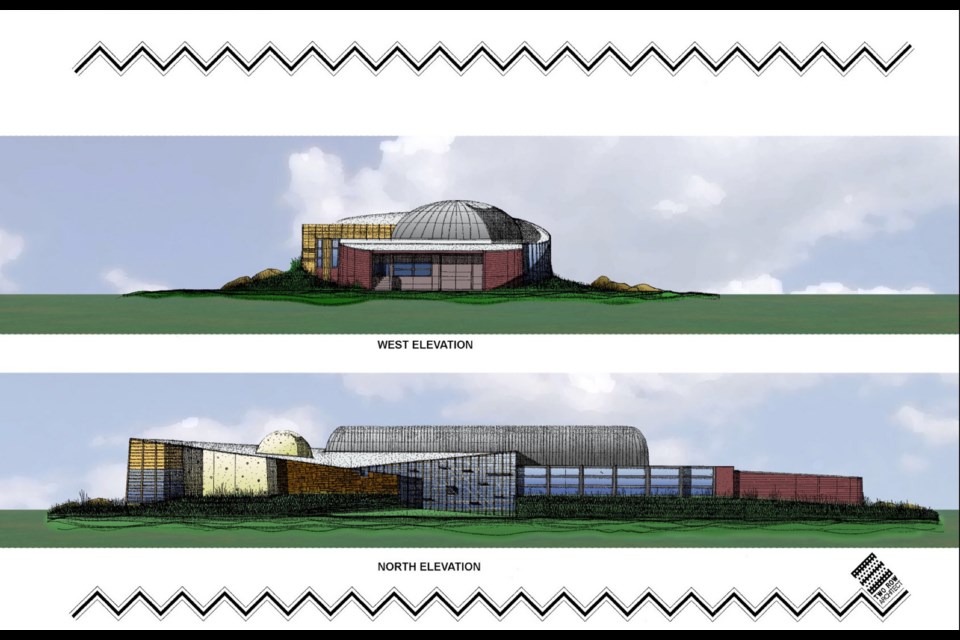A federal cabinet minister will be in the Sault this week to announce a building boom at local post-secondary institutions.
Officials from Sault College, Algoma University and Shingwauk Kinoomaage Gamig have been invited to a news conference Friday afternoon at Algoma University's Shingwauk Hall.
Everyone involved has been asked to keep the 12:30 p.m. Friday joint announcement under wraps and the date and other arrangements are still subject to change.
But SooToday has learned that the federal government intends to reveal local allocations under a $2 billion federal investment in college and university infrastructure across Canada.
In April, Algoma University approved three project applications under the Post-Secondary Institutions Strategic Investment Fund:
- a $18-million, four-storey addition to its five-year-old steel-and-glass biosciences and technology convergence centre.
- a new three-storey centre for Anishinaabe and professional studies costing $20 to $25 million.
- a $5-million energy upgrade for Shingwauk Hall, the university's 81-year-old main building housing classrooms and administrative and faculty offices.
Sources indicate that the Shingwauk Hall energy upgrade will be announced on Friday as Algoma U's approved infrastructure project.
The university's board of governors met behind closed doors last week to discuss the forthcoming renovations.
The governors agreed Thursday to allocate a $1.3-million fiscal surplus toward the cost of the energy project.
Shingwauk Hall's heating and cooling system is expected to be replaced with high-efficiency boilers, a cooling tower, air handling units, pumps and a secondary cooling loop with free cooling.
Under Algoma University's application, all lighting in the building would be upgraded to LED fixtures with daylight harvesting.
The project proposal also called for roof repairs, replacement of all windows, high-efficiency plumbing fixtures in washrooms, and removal of hazardous materials.
All washrooms are expected to be renovated to provide barrier-free accessibility throughout the entire building.
Sault College
In May, Sault College announced that it was seeking $21.5 million under the Post-Secondary Institutions Strategic Investment Fund for 15,350 square feet of new construction and 43,500 square feet of refurbished buildings.
The Sault College campus badly needs updating - much of it was built five years before man first walked on the moon.
If its full initial proposal is approved, the college will gain a new institute of environment, education and entrepreneurship to facilitate expansion of its natural environment programs.
The proposal also provides for new applied research space where industry and community partners would work alongside students and faculty.
Also planned is a new elevator and surrounding common space in E Wing.
In a presentation to City Council, President Dr. Ron Common pointed to benefits including:
- the innovative new design and equipment would attract students to Sault Ste. Marie
- building operating costs would be slashed
- deferred maintenance costs would be cut by $37 million
- 166 jobs would be created during construction
- new 'green' buildings would reduce greenhouse gas emissions
Shingwauk Kinoomaage Gamig
Shingwauk Kinoomaage Gamig (SKG), an evolving, Sault-based Anishinaabe university that offers a four-year bachelor of arts degree in Anishinaabe studies through Algoma University, is also seeking a significant piece of the federal postsecondary infrastructure pie.
SKG is proposing a $10-million Anishinabek Discovery Centre, to be built near Algoma U on land overlooking Shingwauk Island on the banks of the St. Marys River.
"There has never been a concerted effort by First Nations people to collect all of the relevant documents and monuments related to our heritage," says a business case developed for the project by Shingwauk Education Trust.
The institution's initial collection of library materials, art, archives and museum artifacts would come from a proposed partnership with the Assembly of First Nations.
Future collections may include:
- records of the Truth and Reconciliation Commission of Canada
- records of First Nations organizations that require professional archival and records management services
- personal papers, artifacts and records of prominent First Nations leaders and individuals in the broader public sphere who have who have contributed to enhancing the leadership capacity of First Nations peoples in Canada.
If approved for funding, the proposed 19,000-square-foot building would create about 150 construction jobs and 10 permanent knowledge-based positions.
"The Assembly of First Nations have reported that they are approaching a crisis in space which is due in part to the growing set of records of current and past grand chiefs," says the application for federal infrastructure funding. "There is a clear need for a central repository which will preserve and protect these documents and articles."
The proposal points out that Sault Ste. Marie has historically been a gathering place for First Nations people and has been the home of Chief Shingwauk's 'teaching wigwam' since 1832.
"The Anishinabek Discovery Centre will be a world-class showcase of First Nation heritage unlike any other facility. It will position Sault Ste. Marie internationally as a centre of excellence on First nation culture, First Nation leadership, the First Nation cultural experience and the residential school experience," the proposal states.
"It will attract visitors and researchers from across Canada and around the world, as it will be a one-of-a-kind facility and experience."
